Living with Hearing Loss
Explore the Latest Deaf Products Catalog for 2024
Witness the future of accessibility with the 2024 Deaf products catalog, where groundbreaking technologies await to transform daily interactions.
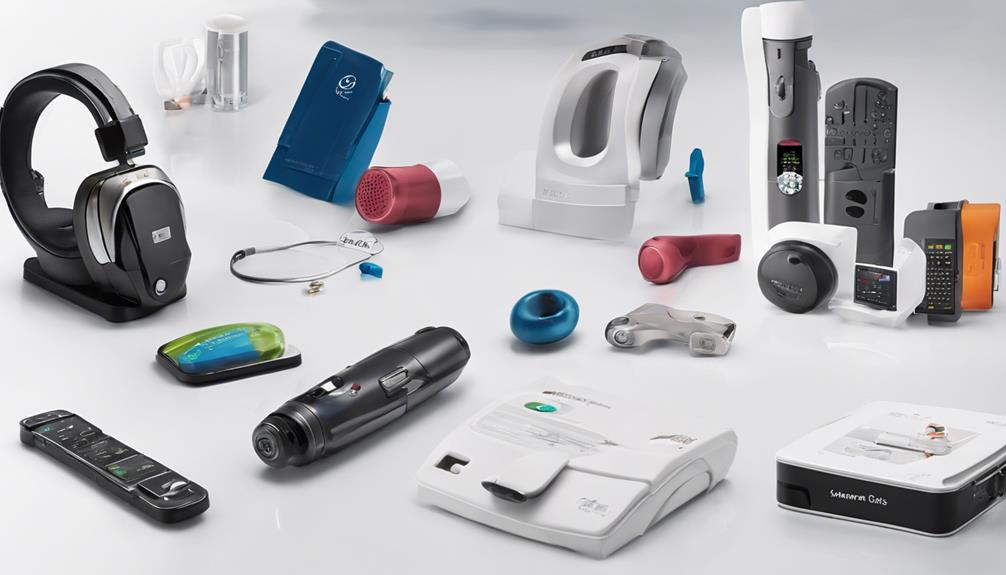
As we navigate through the ever-evolving landscape of assistive technologies, the 2024 Deaf products catalog unveils a realm of possibilities for enhancing daily life experiences.
With a focus on cutting-edge communication devices and personalized hearing assistance apps, this catalog promises to revolutionize the way individuals with hearing impairments engage with their surroundings.
Stay tuned as we unravel the intricacies of these innovative solutions that are set to redefine accessibility and inclusivity in ways you never thought possible.
Key Takeaways
- Cutting-edge communication devices offer enhanced accessibility and notification delivery.
- Modern assistive technologies revolutionize inclusivity and communication experiences.
- Advanced hearing aids feature innovative technologies for improved speech understanding.
- Personalized alert settings and home safety solutions empower deaf individuals for a better quality of life.
Cutting-Edge Communication Devices
When exploring cutting-edge communication devices for the deaf community, we discover a range of innovative solutions that enhance accessibility and connectivity. From TTYs to vibrating clocks and watches, these devices cater to individuals with hearing impairments, offering them efficient ways to communicate and stay connected.
Mobile and smartphone accessories further elevate the communication experience for those with hearing loss, providing additional support and functionality. Alerting systems like Bellman & Symfon Visit and Clarity Alertmaster are designed to deliver notifications effectively, ensuring that deaf individuals don't miss important alerts or messages.
These advanced technologies in communication devices play a crucial role in bridging the gap for individuals with hearing impairments, empowering them to engage more fully in various settings. By constantly evolving and adapting to the needs of the deaf community, these devices continue to push the boundaries of accessibility and inclusivity, making communication more seamless and efficient for everyone involved.
Modern Assistive Technologies
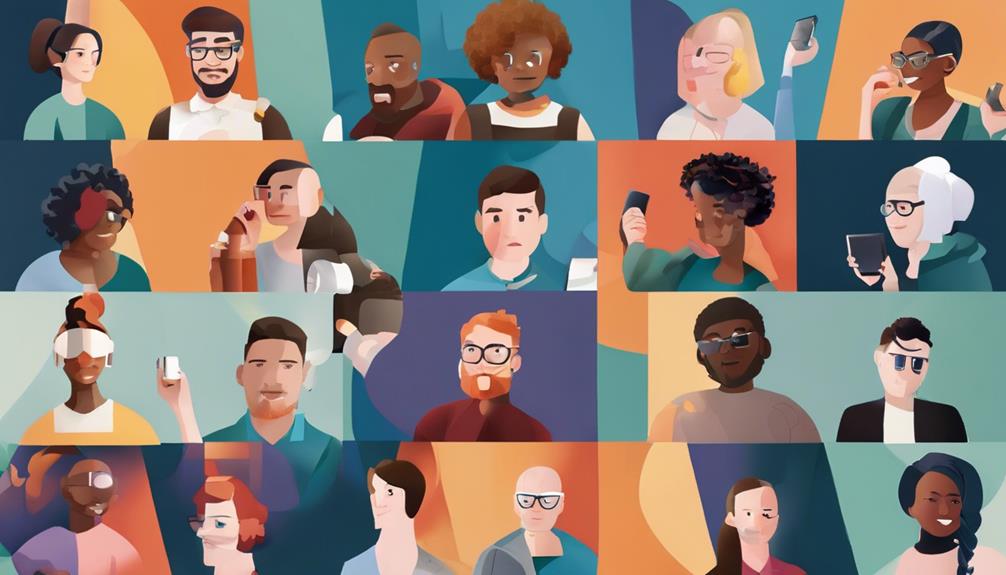
Let's explore the innovative world of modern assistive technologies catered to individuals with hearing impairments.
From cutting-edge hearing aids to advanced communication devices and sign language interpreters, these products aim to enhance the quality of life for the Deaf and Hard of Hearing community.
Stay tuned to discover how these tools can revolutionize accessibility and communication for individuals with hearing challenges.
Cutting-Edge Hearing Aids
Exploring the latest advancements in hearing aid technology reveals a world of innovation and personalized solutions for individuals with varying degrees of hearing loss.
- Oticon offers advanced hearing aids for mild to profound hearing loss, including models for single-sided deafness.
- Oticon's BrainHearing technology provides natural sound processing to improve speech understanding and listening comfort.
- Oticon's innovative features like Deep Neural Network (DNN) and Bluetooth streaming enhance the user experience and connectivity.
These cutting-edge hearing aids from Oticon, such as the Oticon Own, Xceed, Zircon, and CROS/BiCROS models, aren't only tailored to diverse hearing needs but also prioritize connectivity and user comfort. With Oticon's commitment to quality sound processing and personalized fitting through hearing professionals, users can experience a new level of auditory clarity and engagement.
Innovative Communication Devices
Transitioning from the realm of cutting-edge hearing aids, we now shift our focus to the realm of innovative communication devices, also known as modern assistive technologies. These communication devices are designed to enhance the quality of life for deaf individuals by offering advanced features like Bluetooth connectivity, wireless integration, visual alerts, vibrating notifications, and text-to-speech capabilities. They cater to the specific communication needs of the deaf community, providing clear and accessible solutions.
From smartphones to TTY systems and home alerting systems, these devices support various platforms to ensure seamless communication. By embracing the latest assistive technologies, individuals can experience improved communication accessibility, leading to a positive impact on their overall quality of life.
Advanced Sign Language Interpreters
Advanced Sign Language Interpreters, utilizing AI and machine learning, revolutionize communication accessibility for deaf individuals by enhancing the accuracy and speed of sign language translation across various devices.
These interpreters can be seamlessly integrated into smartphones, tablets, and computers, offering convenient access to real-time translations. They come with advanced features such as customization options and compatibility with different sign languages, improving the quality of communication for the hearing impaired.
Innovative Hearing Aid Solutions
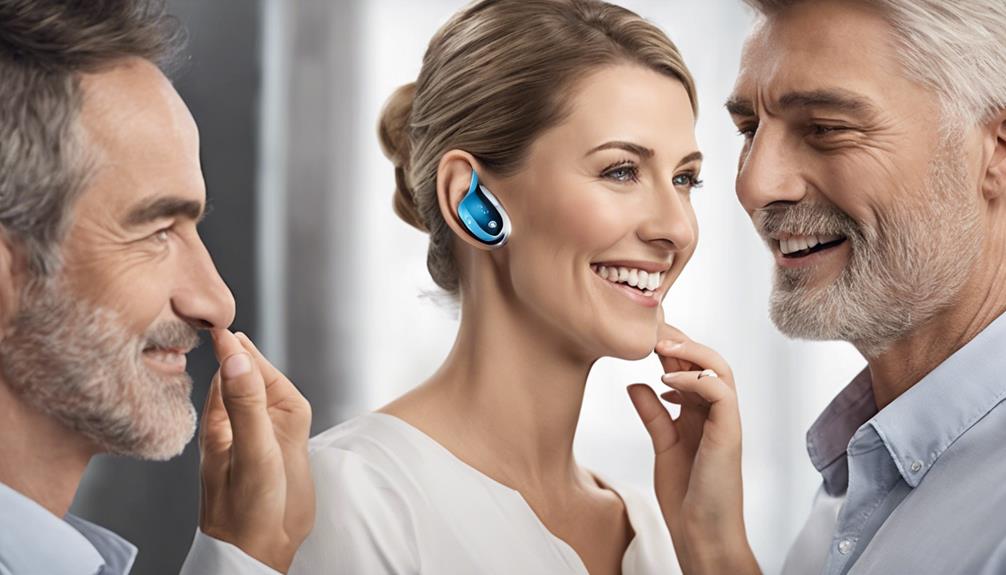
When seeking innovative hearing aid solutions, Oticon stands out as a leading provider with advanced technology catering to various levels of hearing loss. Oticon offers quality solutions for individuals with hearing impairments, ranging from mild to profound, even addressing single-sided deafness.
Their hearing aids, such as Oticon Own, Oticon Xceed, and Oticon Zircon, are known for their cutting-edge features like Bluetooth streaming, tinnitus support, and BrainHearing technology. Oticon's BrainHearing technology is particularly noteworthy for its natural sound processing, which reduces listening effort and provides a more comfortable listening experience.
These advanced solutions aren't available over-the-counter but through hearing professionals who ensure proper fitting and customization to meet individual needs. As a leading brand under Demant A/S of Denmark, Oticon continues to innovate, offering solutions that prevent the negative impacts of untreated hearing loss.
For those seeking top-quality hearing aid options with advanced technology, Oticon is a brand worth considering.
Advanced Alert Systems

Let's explore the exciting world of advanced alert systems designed to enhance safety for the deaf and hard of hearing community.
These systems offer enhanced safety features, innovative notification technology, and customizable alert settings to cater to individual needs.
Stay tuned as we uncover how these cutting-edge solutions are revolutionizing home safety and providing peace of mind.
Enhanced Safety Features
Enhance your home safety with cutting-edge alert systems tailored to meet the unique needs of the deaf community. When it comes to enhanced safety features, consider the following:
- Hearing Devices: Explore vibrating clocks, watches, and alarm systems that are specifically designed to cater to the needs of deaf individuals.
- Smoke Alarms: Discover advanced alert systems like the Serene CentralAlert and Sonic Alert HomeAware, providing reliable household safety solutions without intruding on daily routines.
- Contact Information: Access a list of providers offering comprehensive alerting systems to ensure your specific safety requirements are met effectively.
These innovative safety solutions not only prioritize security but also integrate seamlessly into your home environment, offering both style and functionality.
Innovative Notification Technology
Discover how advanced alert systems revolutionize home safety for the deaf community with cutting-edge notification technology.
Advanced alert systems like Serene CentralAlert and Sonic Alert HomeAware offer innovative household safety solutions. These systems feature vibrating alarm clocks, watches, and alert systems that provide visual and tactile alerts, ensuring the safety of deaf individuals.
The integration of notification technology into homes offers seamless and non-intrusive safety solutions. Not only do these alerting devices enhance safety, but they're also stylish and functional, blending seamlessly into home decor.
Deaf children can benefit greatly from these advanced technologies, providing them with independence and security. Explore the latest in alarm clock advancements and other notification devices to create a safe environment for the deaf community.
Customizable Alert Settings
With customizable alert settings, advanced alert systems empower deaf individuals to tailor their notifications for optimal awareness and safety. These systems offer a range of customization options, including personalized alert tones, volumes, and patterns. Users can set alarms, reminders, and notifications that suit their specific needs and preferences.
Customizable alert settings are particularly beneficial for deaf and hard of hearing individuals, ensuring they stay informed and alert to important events. Additionally, users can adjust settings based on different times of day or specific activities, guaranteeing they receive the necessary alerts when they need them most.
This level of customization enhances the overall user experience and contributes to a greater sense of independence and security.
Interactive Sign Language Tools
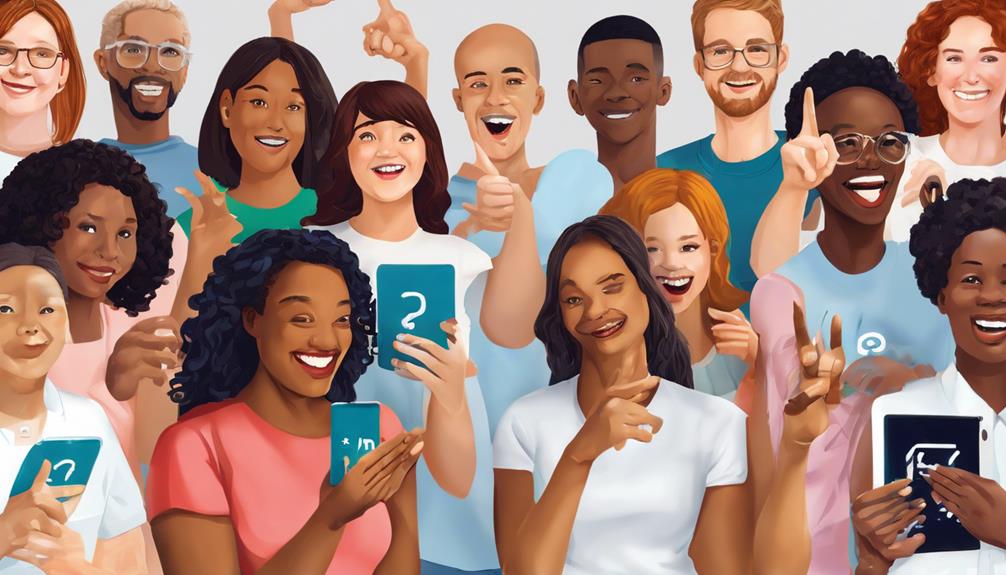
Interactive sign language tools offer engaging learning experiences for users. They provide video tutorials, quizzes, and games to enhance sign language skills. These tools cater to different skill levels, from beginners to advanced signers, and offer features like practicing with virtual characters and interactive modules.
By incorporating feedback mechanisms and progress tracking, users can monitor their learning improvement over time. These tools play a vital role in promoting hearing health by encouraging the use of sign language as an alternative form of communication.
Additionally, in the realm of personal listening, interactive sign language tools can enhance understanding and connection for individuals looking to expand their communication abilities. Whether someone is looking to learn the basics or refine advanced techniques, these tools offer an immersive and interactive way to engage with sign language, making the learning process both educational and enjoyable.
Smart Home Integration Devices
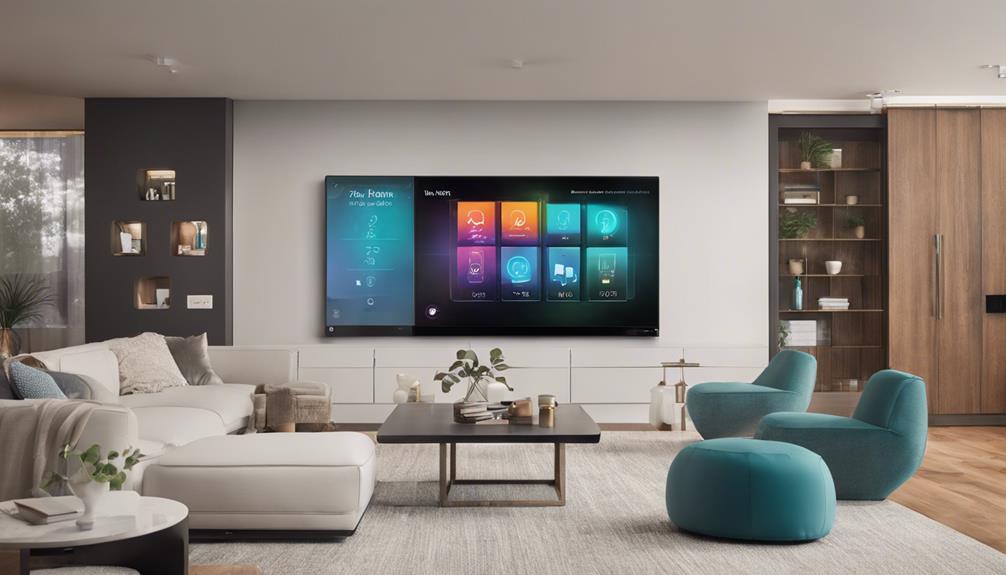
Smart home integration devices provide practical solutions for enhancing home safety and comfort for individuals with hearing impairments. These innovative devices not only cater to the specific needs of people with hearing loss but also seamlessly blend into the modern home environment. Here are some key features of smart home integration devices designed for individuals with hearing impairments:
- Non-intrusive Safety Enhancements: Smart home devices offer discreet ways to enhance safety without compromising on style or functionality.
- Seamless Notification Integration: These devices smoothly integrate notification systems into homes, ensuring that individuals with hearing loss are always informed.
- Stylish and Functional Design: Best-selling products in this category prioritize both safety features and aesthetic appeal, providing a blend of style and functionality.
With these smart home integration devices, individuals with hearing impairments can enjoy a safer and more convenient living environment that caters to their specific needs.
Portable Captioning Solutions

Portable captioning solutions offer real-time text display for individuals who are deaf or hard of hearing, enhancing accessibility in various settings. These devices cater to the specific needs of the hard of hearing community, providing a customizable listening experience through visual text support. Users can adjust font size, color, and display settings to optimize their viewing comfort, ensuring a seamless interaction with captioned content on-the-go. Some portable captioning solutions go a step further by incorporating advanced speech-to-text technology, enabling instant transcriptions for enhanced communication.
To better understand the features of portable captioning solutions, let's explore a comparison table showcasing key aspects of these innovative devices:
| Feature | Description |
|---|---|
| Real-Time Text Display | Provides instant captions for a seamless listening experience. |
| Customization Options | Allows users to personalize font size, color, and display settings. |
| Speech-to-Text Technology | Offers instant transcriptions for efficient communication. |
| On-the-Go Accessibility | Enables users to access captioned content in various settings conveniently. |
Vibrant Visual Alert Systems
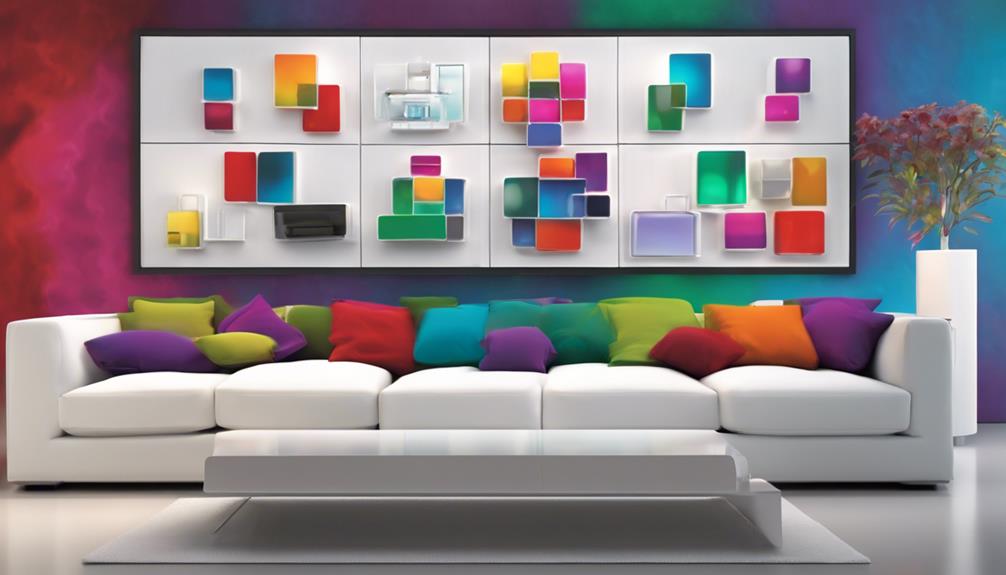
Visual alert systems featuring vibrating clocks, watches, and alarm systems are crucial for individuals who are deaf or hard of hearing. These systems provide essential visual cues through flashing lights or vibrations to alert users to various sounds or events. Vibrant visual alerts are a lifeline for those who may not hear traditional auditory alarms or notifications.
- Customizable Settings: Visual alert systems offer a range of customizable settings to cater to different preferences and needs, ensuring that users receive alerts in a way that suits them best.
- Stylish Design: The latest visual alert systems aren't only functional but also stylish, blending seamlessly into home environments without compromising on aesthetics.
- Integration: These systems are designed to be seamlessly integrated into daily life, providing a reliable means of notification without being obtrusive.
With the advancement of visual alert technology, individuals who are deaf or hard of hearing can stay informed and safe in various situations, making these systems a vital addition to their everyday lives.
Wireless Connectivity Accessories
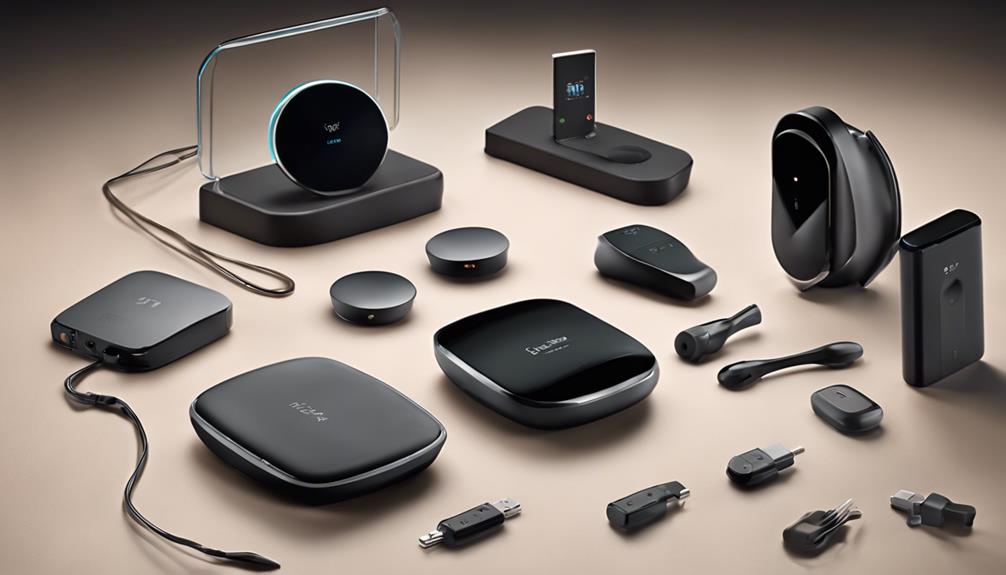
Wireless connectivity accessories seamlessly integrate hearing aids with smartphones and other devices, enhancing user experience and providing greater convenience in daily activities. These accessories enable users to stream phone calls, music, and other audio directly to their hearing aids, ensuring a seamless connection to the digital world. By using compatible apps, individuals can wirelessly control volume, settings, and audio sources, customizing their listening experience with ease.
Moreover, some wireless connectivity accessories go a step further by offering remote microphone functionality, enhancing sound quality in challenging environments like noisy restaurants or crowded gatherings.
The advancement in wireless connectivity accessories not only improves the overall functionality of hearing aids but also opens up a world of possibilities for individuals with hearing loss. With these accessories, users can enjoy clearer sound, effortless streaming, and enhanced control over their hearing aids, making daily communication and entertainment more accessible and enjoyable.
Personalized Hearing Assistance Apps
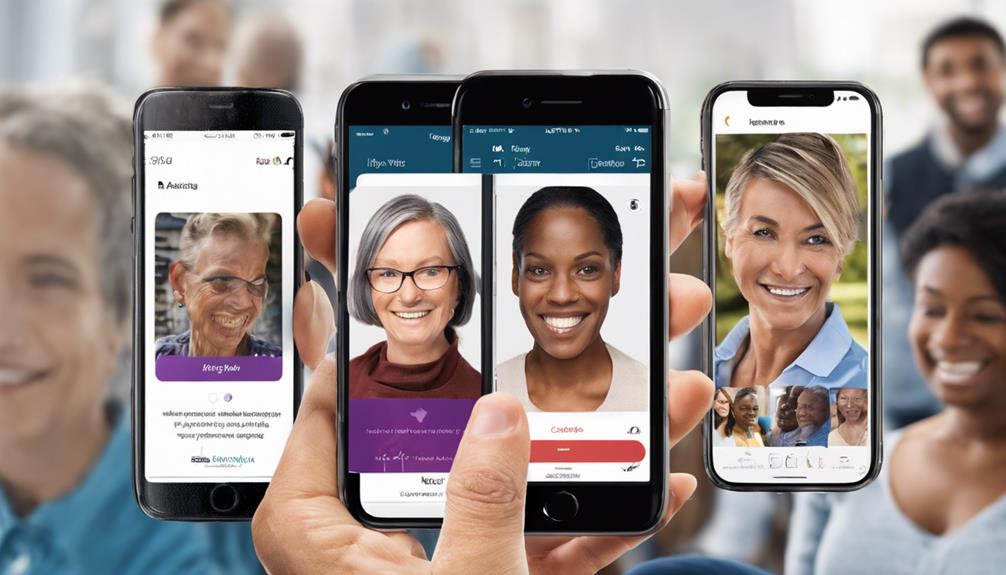
Enhancing the functionality of hearing aids further, personalized hearing assistance apps offer tailored sound amplification to cater to individual hearing needs. These apps revolutionize the way users experience sound by providing customizable features such as:
- Customized Sound Amplification: Users can adjust frequency levels, volume, and background noise reduction to create an optimal listening experience personalized to their specific hearing requirements.
- Adaptive Settings for Different Environments: Fine-tune settings for various scenarios like noisy restaurants, quiet offices, or outdoor settings, ensuring clear sound in any situation.
- Real-Time Feedback: Some apps go beyond amplification by offering real-time feedback on hearing health metrics. This includes monitoring exposure to loud noises and tracking daily listening habits, empowering users to make informed decisions about their auditory well-being.
Personalized hearing assistance apps not only enhance sound amplification but also provide valuable insights into hearing health, making them essential tools for individuals seeking innovative solutions for their hearing needs.
Enhanced Accessibility Gadgets
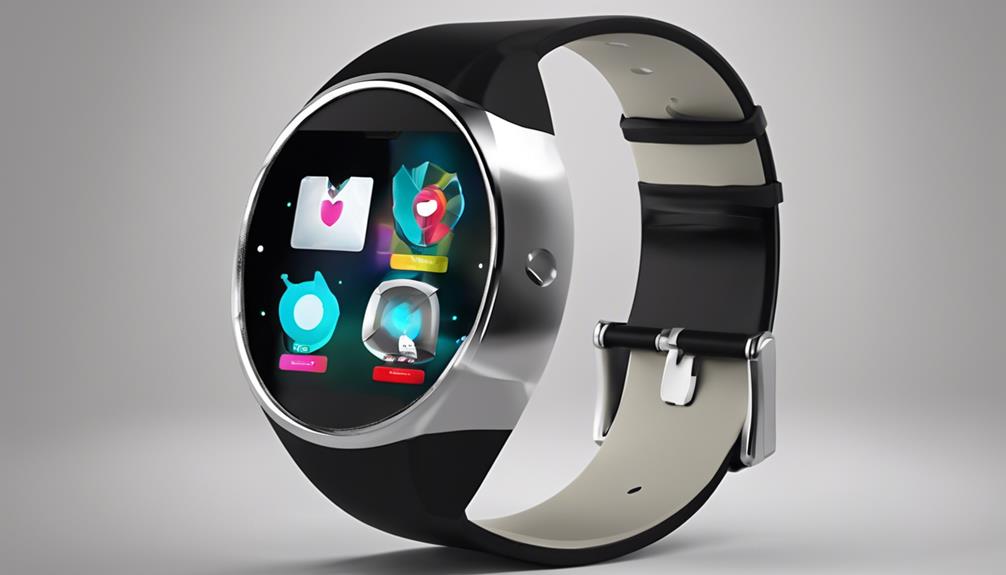
In the latest Deaf Products Catalog for 2024, a diverse range of enhanced accessibility gadgets cater to individuals with hearing impairments. This catalog showcases a wide array of innovative assistive devices tailored to improve accessibility for the Deaf community. Among the featured gadgets are vibrating alarm clocks, alerting systems, and personal amplification devices designed to enhance daily living. These gadgets not only offer practical solutions but also promote independence and safety.
Moreover, the catalog presents advanced communication tools like TTYs, vibrating watches, and alert triggers, all aimed at facilitating better communication for those with hearing impairments. For home safety and communication needs, options such as the Serene CentralAlert and Sonic Alert HomeAware are available in the catalog. These household alert systems ensure that individuals are alerted to important signals and events.
Additionally, the catalog includes a selection of mobile accessories, communication devices, and alerting systems that are customized to address the unique requirements of deaf individuals. Explore the latest innovations in accessibility gadgets to enhance your daily life and communication experiences.
Frequently Asked Questions
What Is the New Invention for Deaf People?
We've got exciting news for the deaf community – a cutting-edge vibrating alarm clock!
It's sleek, modern, and fully customizable for different wake-up preferences. With dual alarms, USB ports, and a built-in night light, this innovation caters to individual needs.
Users can choose from various tones and patterns, making it versatile and user-friendly.
This vibrating alarm clock redefines the wake-up experience for those with hearing impairments, providing convenience and functionality in one sleek design.
Does Medicare Pay for Captioned Phones?
Medicare doesn't cover captioned phones directly, but state programs or the Captioned Telephone Service (CTS) through the Telecommunications Relay Service (TRS) funded by the FCC may offer financial assistance. Users can read real-time captions on screen while speaking. Some providers offer discounts or payment plans for affordability.
Check with providers and programs to understand coverage options and assistance.
Which Oticon Hearing Aid Is Best for Profound Hearing Loss?
When it comes to profound hearing loss, the Oticon Xceed model stands out as the top choice. Packed with BrainHearing technology and OpenSound Navigator, it delivers unparalleled sound clarity and speech understanding.
Powered by the Velox S platform, this advanced device offers optimal performance in challenging listening environments. For those seeking reliable communication abilities, the Oticon Xceed is the go-to option, providing powerful amplification and enhanced speech comprehension.
What Is the Latest Hearing Device?
The latest hearing device is the Oticon Real, offering both disposable and rechargeable options. It boasts Bluetooth streaming and an IP68 rating for water and dust resistance. With BrainHearing technology, Oticon Real reduces listening effort, providing a natural sound experience.
RealSound Technology ensures clarity in diverse listening environments, while More Sound Intelligence 2.0 helps focus on specific sounds in noisy situations. Overall, the Oticon Real is a cutting-edge choice for enhanced hearing experiences.
Can Deaf Products for Humans be Adapted for Deaf Dogs as Well?
Looking for deaf dog trainers near me? When it comes to adapting products for deaf dogs, many resources aimed at deaf humans can be repurposed. For example, visual cues and hand signals used in human sign language can be utilized for training deaf dogs. With the right guidance from experienced deaf dog trainers near me, it’s possible to find effective solutions.
Conclusion
In conclusion, the 2024 Deaf products catalog offers a wide range of innovative solutions to enhance the quality of life for individuals with hearing impairments.
While some may question the necessity of these products, it's important to remember that accessibility and inclusivity are key pillars of a thriving society.
By embracing cutting-edge technologies and assistive devices, we can ensure that everyone, regardless of their abilities, can fully participate and engage in the world around them.
Jamie is one of the creative forces behind the words that resonate with our audience at Deaf Vibes. With a passion for storytelling and advocacy, Jamie delves into topics that matter deeply to the deaf and hard-of-hearing community. Jamie’s articles are crafted with empathy, insight, and a commitment to positive change, from exploring the latest advancements in hearing technologies to shedding light on the everyday challenges and victories of those within the community. Jamie believes in the power of shared stories to inspire action, foster understanding, and create a more inclusive world for everyone.
Living with Hearing Loss
What Transcription Services Are Available for the Deaf Community?
Navigate the world of transcription services for the deaf community, uncovering a spectrum of solutions designed to enhance accessibility and communication.

Let's talk about the diverse range of transcription services tailored to meet the needs of the deaf community.
From real-time captioning to professional transcriptions, the options available are vast and evolving to enhance accessibility and communication.
Understanding the nuances and benefits of each service is vital for making informed decisions that can significantly impact the quality of interaction and information exchange for individuals with hearing impairments.
Key Takeaways
- CART offers verbatim transcripts for precise word-for-word capture.
- C-Print® and TypeWell focus on conveying the meaning behind spoken words.
- Different situations may require different services for the deaf community.
- Transcription services bridge communication gaps and enhance accessibility for diverse audiences.
Speech-to-Text Services Overview
Have you ever wondered how speech-to-text services cater to the diverse needs of the deaf community?
In the realm of real-time transcription, various services like CART offer verbatim transcripts, capturing every word spoken and generating about 40 pages of text per hour. On the other hand, options like C-Print® and TypeWell focus on conveying the meaning behind the words, producing around 15 pages of transcript per hour with contextual clarity.
Verbatim services excel at capturing nuances like false starts and filler words, while meaning-for-meaning providers prioritize accuracy and coherence by eliminating errors. When deciding between these types of transcription, it boils down to individual preferences and specific requirements.
Different situations may call for different approaches, and there isn't a one-size-fits-all solution. Understanding the distinctions between these services allows for tailored support that meets the diverse needs of the deaf community in real-time situations.
Factors in Choosing STTS
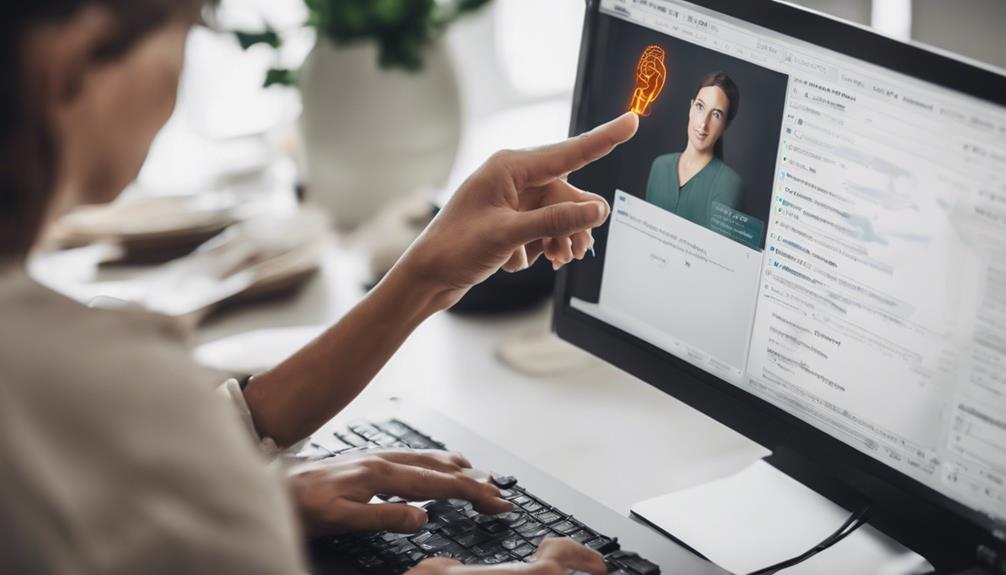
When considering the selection of Speech-to-Text Services (STTS), individuals must weigh various factors to ensure the most suitable option is chosen to meet their specific needs. Here are some key considerations to keep in mind:
- Transcript Output: Verbatim services like CART offer approximately 40 pages of transcript per hour, providing a detailed account of the spoken content. On the other hand, meaning-for-meaning services such as C-Print® and TypeWell produce around 15 pages per hour, focusing on conveying the essence of the communication.
- Personal Preferences: Different STTS cater to individual preferences and specific needs. Some individuals may prefer verbatim services for detailed information, while others may opt for clarity with meaning-for-meaning services. It's essential to choose a service that aligns with personal preferences to enhance the overall experience.
- Adaptability for Different Settings: Students, for example, may require different STTS based on the requirements of various classes. Ensuring that the chosen service is adaptable to different settings and contexts is crucial for seamless integration into daily activities.
Cost Considerations for STTS
Considering the financial aspects of Speech-to-Text Services (STTS) is essential when exploring options to cater to the needs of the deaf community. CART services are known to be more costly than C-Print® and TypeWell due to the higher education requirements and expensive equipment involved.
CART providers command higher pay rates, often influenced by court reporter rates, while C-Print® and TypeWell providers generally earn less per hour. The shorter training duration and lower equipment costs associated with C-Print® and TypeWell make them more budget-friendly alternatives to CART services.
The decision between verbatim and meaning-for-meaning services can also impact costs, as individual preferences and specific needs play a significant role in determining the most suitable option. It's important to note that there's no one-size-fits-all solution, as different situations may call for different services.
Understanding these cost considerations can help in making informed decisions when selecting the most appropriate STTS, especially when considering the expertise of CART providers.
STTS Vs. Notetakers

Exploring the differences between Speech-to-Text Services (STTS) and notetakers reveals distinct roles in providing support for the deaf community. When considering the best option for transcription services, it's essential to understand these variations:
- Real-Time Captioning Services (STTS):
- STTS such as CART deliver word-for-word transcripts, capturing detailed speech nuances.
- Providers like CART typically produce about 40 pages of verbatim transcript per hour, offering a high level of accuracy.
- STTS are crucial for individuals who require precise, real-time transcription to follow along effectively.
- Notetakers:
- Notetakers complement real-time captioning by offering lecture outlines and supplementary notes.
- They provide essential visual content details and summaries to enhance understanding.
- Notetakers play a vital role in capturing the overall context of the conversation or lecture.
Understanding the distinct advantages of both Speech-to-Text Services and notetakers can help individuals make informed decisions about the most suitable support for their needs.
Remote Speech-to-Text Options
Remote speech-to-text services offer a convenient solution for accessing real-time transcription remotely, catering to various needs where on-site services are not viable. These services connect writers to audio content through the internet or phone, enabling access to instant transcription. While remote speech-to-text services are suitable for many environments, challenges may arise in settings with poor technology access, impacting service quality. Providers may find it difficult to accurately capture visual content like slides or gestures, posing a hurdle in delivering precise transcriptions. To ensure effective remote speech-to-text services, a reliable internet connection, quality microphone, and proper conferencing software are essential. Here is a visual representation of the key points:
| Challenges | Solutions |
|---|---|
| Poor technology access | Ensure reliable internet connection |
| Capturing visual content | Use quality microphone |
| Ensuring service quality | Opt for proper conferencing software |
| Accessibility | Provide real-time transcription access |
Hearing Impaired Transcription Explained

Hearing impaired transcription services, such as CART, C-Print®, and TypeWell, play a crucial role in providing real-time text translations for the deaf community. These services offer invaluable support by ensuring effective communication access. Here's a closer look at how these services operate:
- CART Services: CART services are known for their high level of accuracy, producing approximately 40 pages of verbatim transcripts per hour. This real-time text translation captures spoken words with precision, enabling seamless communication for individuals with hearing impairments.
- C-Print® and TypeWell: Meaning-for-meaning services like C-Print® and TypeWell provide around 15 pages of context-based transcripts per hour. While they may not offer verbatim transcriptions, these services focus on delivering clear and concise text that enhances overall understanding during interactions.
- Tailored Solutions: Providers like TranscriptionStar offer deaf transcription services tailored to specific needs, whether for educational, religious, or organizational purposes. These customized solutions ensure that the deaf community has access to accurate and relevant transcripts for various settings and activities.
Benefits of Hearing Impaired Transcription
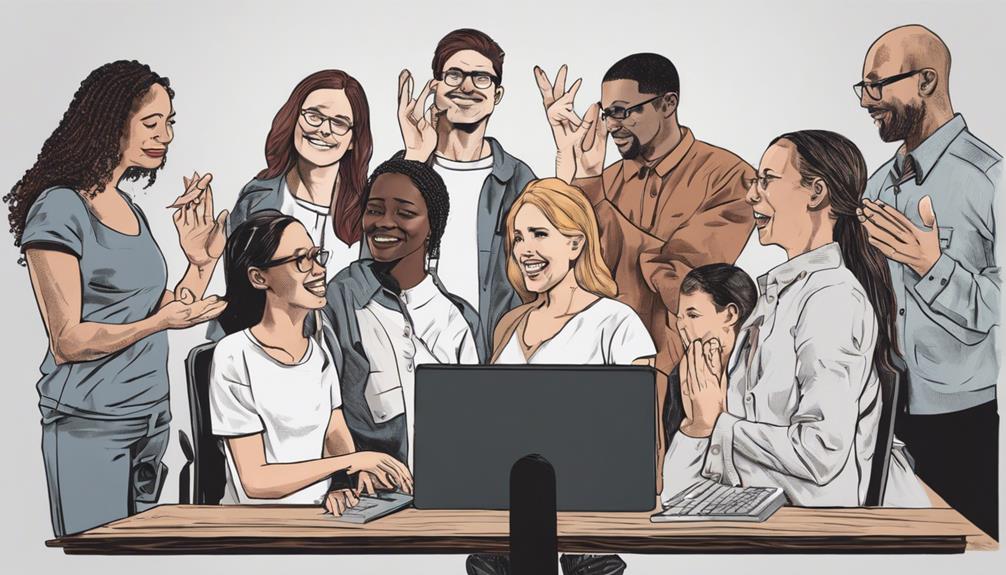
As we consider the impact of hearing impaired transcription services on the deaf community, it becomes evident that these services offer a vital lifeline by providing real-time access to information and enhancing communication for individuals with hearing impairments. Access Realtime Translation (CART) services play a crucial role in bridging the communication gap and empowering deaf individuals in various settings. Let's explore the benefits of hearing impaired transcription in the table below:
| Benefits of Hearing Impaired Transcription |
|---|
| Real-time access to information |
| Enhanced communication abilities |
| Reduced risk of misunderstandings |
| Empowerment through information control |
Through CART services, individuals gain immediate access to spoken content in written form, ensuring they do not miss out on important details. Additionally, these services facilitate smoother interactions, minimize communication barriers, and provide a sense of autonomy over information intake. Overall, hearing impaired transcription services significantly contribute to inclusivity and equal access to information for the deaf community.
Quick Inquiry Process

When it comes to quick inquiry processes for deaf transcription services, we understand the importance of accessibility.
At TranscriptionStar, we offer a seamless experience for calculating costs, uploading files, and selecting turnaround times.
Our focus is on providing pricing transparency, flexible options, and easy integration with various platforms, making the inquiry process straightforward and efficient for the deaf community.
Accessibility Features Offered
Our transcription services for the deaf community offer a streamlined and efficient quick inquiry process to ensure accessibility features are readily available. We understand the importance of providing quick and easy solutions for the deaf community, which is why we've integrated the following accessibility features:
- Quick Transcription Cost Calculation: Easily estimate the cost of your deaf transcription services upfront to plan accordingly.
- Simple Upload Process: Hassle-free transcription services for the deaf community with a user-friendly upload system.
- Flexible Turnaround Time Options: Tailored to meet the diverse needs of the deaf community, ensuring prompt delivery of transcripts.
We are committed to enhancing accessibility and convenience for the deaf community through our innovative transcription services.
Turnaround Time Options
Enhancing accessibility for the deaf community, our transcription services offer a range of flexible turnaround time options to cater to individual needs efficiently. We understand the importance of receiving transcriptions promptly without compromising accuracy. Our quick inquiry process ensures highly accurate transcriptions are delivered within the desired timeframe. Check out the table below for a summary of our turnaround time options:
| Turnaround Time | Description |
|---|---|
| Express | Fastest option for urgent transcription needs |
| Standard | Balanced delivery time for accuracy and speed |
| Extended | Allows for more intricate projects with precision |
With these choices, we guarantee that your transcripts will be delivered promptly and with the utmost accuracy, meeting your specific requirements and deadlines effectively.
Pricing and Packages
At TranscriptionStar, we understand the importance of transparent pricing and customizable packages to meet your unique needs when it comes to quick inquiry processes for deaf transcription services.
When considering our pricing and packages, here's what you can expect:
- Quick Cost Calculation: Our platform offers a seamless way to calculate costs for deaf transcription services swiftly.
- Customizable Packages: Tailored pricing packages are available to accommodate individual requirements and budgets effectively.
- Hassle-Free Upload Process: Clients can benefit from a simple upload process, ensuring a smooth and efficient experience for all your transcription needs.
Partnering with TranscriptionStar ensures not only affordability and flexibility but also a user-friendly approach to accessing high-quality deaf transcription services.
Five Reasons to Choose Us

When considering transcription services for the deaf community, you'll find five compelling reasons to choose our tailored and accurate offerings.
Firstly, our Access Realtime Translation (CART) services provide precise transcriptions that cater to the specific needs of the hearing impaired.
Secondly, our commitment to affordability ensures that our clients can benefit from lower charges, potentially saving up to 40% compared to other providers.
Thirdly, our transcripts guarantee exact verbatim copies, capturing detailed nuances for enhanced clarity and accuracy.
Fourthly, whether you require transcriptions for recorded or streaming videos, our errorless transcripts meet diverse needs seamlessly.
Lastly, our flexible pricing options and available discounts allow for a customized approach that suits individual requirements. By choosing us, you aren't just selecting a service but a partner dedicated to delivering exceptional transcription solutions tailored to the unique needs of the deaf community.
Transcription Highlights
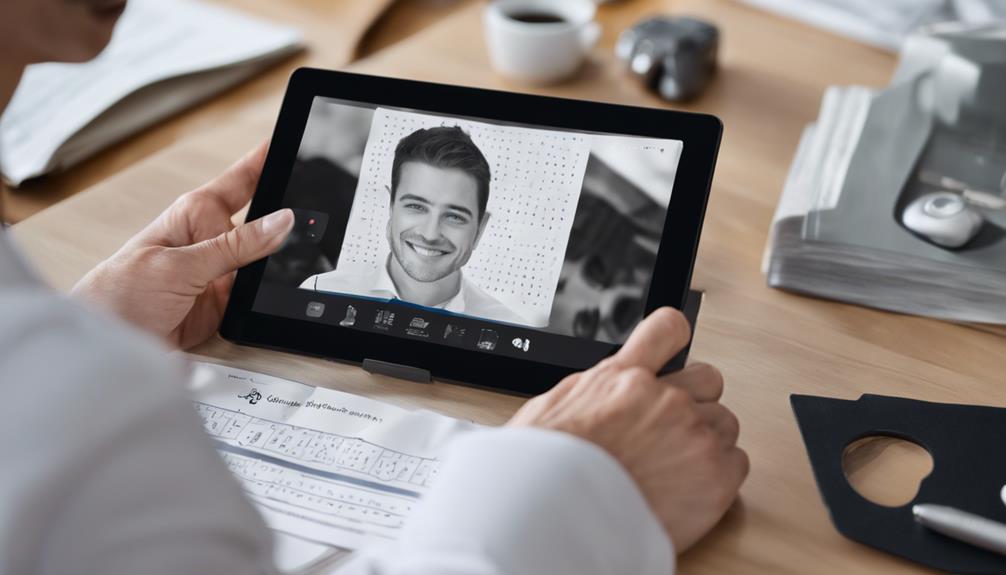
At our transcription service, we prioritize accuracy and reliability with a 98% quality guarantee and round-the-clock customer support.
Our flexible turnaround times cater to your specific needs, ensuring timely delivery of transcripts.
With affordable prices and an option for time coding, our services are accessible and tailored to provide precise reference points.
Transcription for Deaf
In catering to the needs of the deaf community, TranscriptionStar ensures round-the-clock customer service for seamless accessibility. Our focus on deaf transcription services encompasses a range of features tailored to meet specific requirements:
- 98% Accuracy Guarantee: We pride ourselves on delivering reliable and error-free transcripts, ensuring clarity and precision for the deaf community.
- Flexible Turnaround Times: Our service caters to the unique time constraints of the deaf, providing timely transcription solutions to meet individual needs.
- Affordable Pricing: Making high-quality transcription accessible, we offer competitive rates to ensure cost isn't a barrier to accessing our services.
At TranscriptionStar, we understand the importance of accurate, timely, and affordable transcription services for the deaf community.
Accessibility in Transcription
With a focus on enhancing accessibility, TranscriptionStar prioritizes delivering top-notch transcription services tailored to the needs of the deaf community. Our services include Access Realtime Translation (CART), ensuring real-time transcriptions for seamless communication. We guarantee 98% accuracy, providing clear and precise transcriptions that are vital for effective communication.
Our round-the-clock customer service availability ensures continuous support, meeting the diverse needs of the deaf community. Flexible turnaround times are designed to cater to specific requirements, offering timely access to essential information. Affordable pricing makes our transcription services accessible and cost-effective for all.
Time coding options further enhance the organization and utility of transcribed content, making it easier for the deaf community to navigate and utilize the transcriptions effectively.
Sign Language Transcription
Enhancing accessibility for the deaf community, sign language transcription services offer a vital bridge between sign language communication and written text formats, capturing the intricacies and nuances of signed expressions and gestures.
Sign language transcription plays a crucial role in ensuring that deaf individuals can fully engage with various forms of content. Here are three key aspects of sign language transcription:
- Detailed Translations: Transcribers meticulously convert sign language gestures, expressions, and movements into written words, preserving the original meaning and tone.
- Accessibility Enhancement: These services aim to make sign language content accessible through written text formats, providing a more inclusive experience for deaf individuals.
- Nuanced Communication: Sign language transcription captures the subtleties and details of sign language communication, ensuring that the richness of the message is conveyed effectively.
Hearing Impaired Transcription Pricing
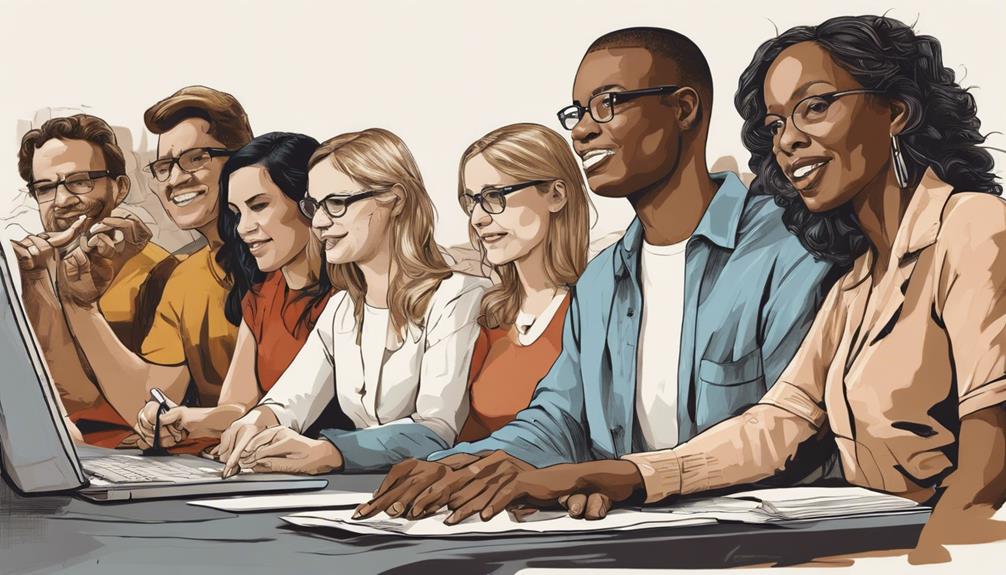
Understanding the complexities of hearing impaired transcription pricing can empower individuals to make informed decisions regarding the transcription services they require.
When considering transcription services for the hearing impaired, it's important to note that CART services generally come at a higher cost compared to C-Print® and TypeWell. This price discrepancy is influenced by the educational requirements and expensive equipment needed for CART providers, as well as the higher pay rates they command due to factors like court reporter rates.
On the other hand, training for C-Print® and TypeWell is shorter, and the equipment costs are lower, resulting in lower hourly earnings for providers in this category.
Additionally, the cost of verbatim transcription services may vary based on the level of detail and customization required.
Fortunately, pricing options for hearing impaired transcription services can be tailored to meet specific needs and budget constraints, allowing individuals to access the services they require at a cost that aligns with their financial resources.
Deaf Transcription Services Overview
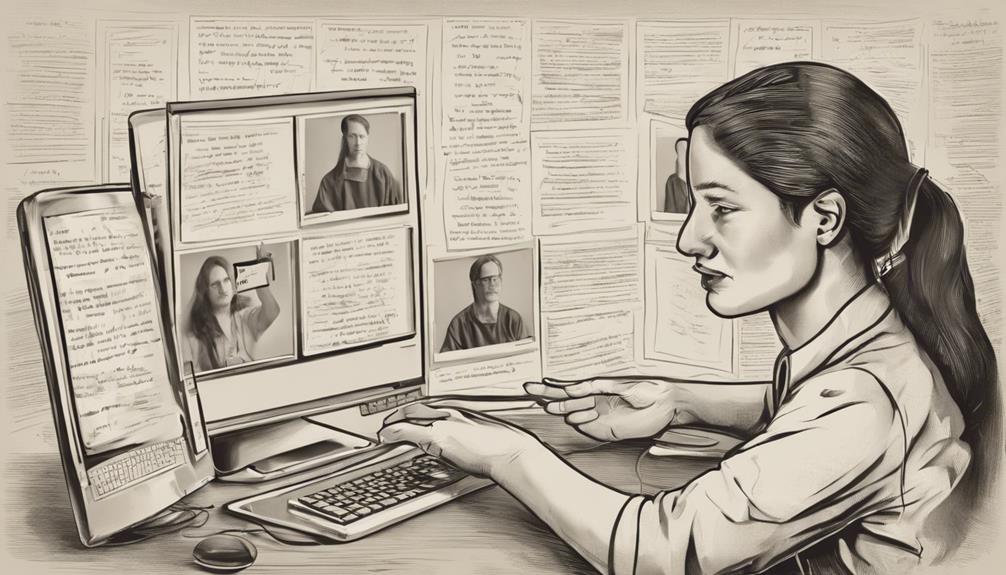
When it comes to Deaf transcription services, we understand the critical need for accessibility in transcription, sign language transcripts, and real-time captioning services to ensure effective communication.
These services play a vital role in bridging the communication gap and providing comprehensive support for the Deaf community.
Accessibility in Transcription
Deaf transcription services, such as C-Print® and TypeWell, offer meaningful text translations at a rate of approximately 15 pages per hour, catering to the specific needs of the deaf community.
When looking at accessibility in transcription, it's essential to consider the following:
- CART Services: Providing verbatim transcripts, generating about 40 pages of transcript per hour, capturing nuances like false starts and filler words.
- Specialized Services: TranscriptionStar offers trusted services for educational institutions, churches, and non-profits, ensuring accurate and accessible information.
- Remote Speech-to-Text: Enables real-time access to transcripts over the internet or phone, enhancing communication in various settings for the deaf community.
These innovations in transcription services are vital for fostering inclusivity and equal participation for the deaf community.
Sign Language Transcripts
In providing sign language transcripts, we ensure equal access to information for the deaf community, bridging communication gaps and facilitating understanding among diverse audiences. Sign language transcripts play a crucial role in capturing the essence of sign language communication, offering a written representation that's invaluable for individuals who rely on sign language.
These transcripts are meticulously crafted by deaf transcription services to provide accurate and detailed accounts of sign language interactions. By transforming visual gestural communication into written form, sign language transcripts empower deaf individuals to access educational, legal, and informational content more effectively.
Whether for educational purposes, legal documentation, or general information sharing, sign language transcripts serve as a vital tool in promoting inclusivity and enhancing communication within the deaf community.
Real-time Captioning Services
To ensure seamless communication accessibility for the deaf community, real-time captioning services play a pivotal role in providing instant word-for-word transcripts of spoken content. Real-time captioning services are essential for capturing spoken words accurately and transforming them into written text in a timely manner.
Some key aspects of these services include:
- CART systems can generate approximately 40 pages of transcript per hour, ensuring rapid accessibility for the deaf community.
- Meaning-for-meaning services like C-Print® and TypeWell offer context-based text translations, producing around 15 pages of transcript per hour to enhance understanding.
- Deaf transcription services aim to provide real-time communication access by converting spoken content into written text, fostering equal participation and engagement for individuals in the deaf community.
Deaf Transcription Process
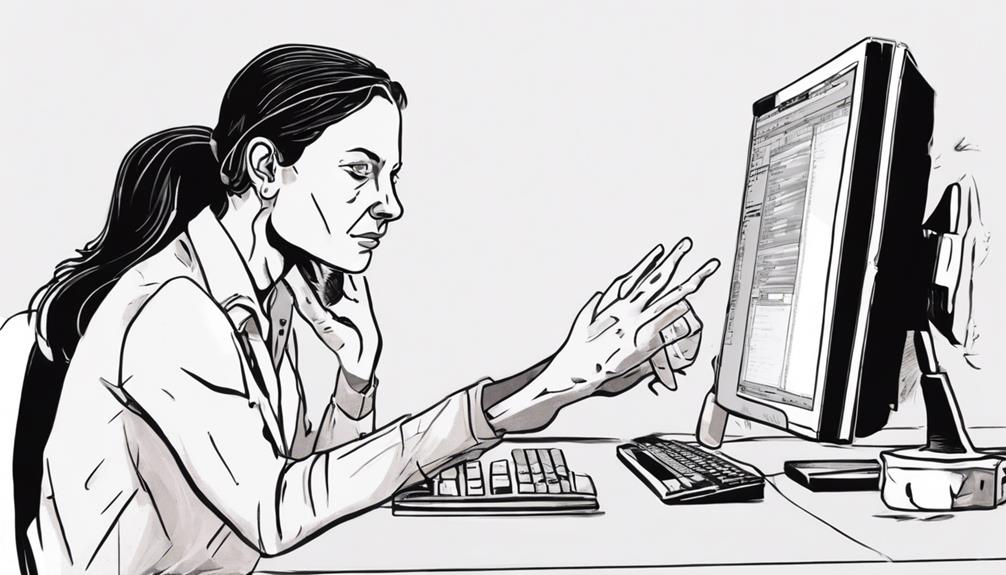
Upon thorough requirement analysis to understand specific needs accurately, the Deaf transcription process proceeds with crucial planning after scope approval to ensure meeting necessary standards.
Utilizing the best tools and systems, transcription services for the Deaf community aim to deliver accurate and accessible content. A detailed review is conducted to identify errors and inconsistencies in the transcription before final drafts are securely delivered.
This meticulous process guarantees high-quality transcriptions that meet the unique requirements of the Deaf community.
Additional Services Offered
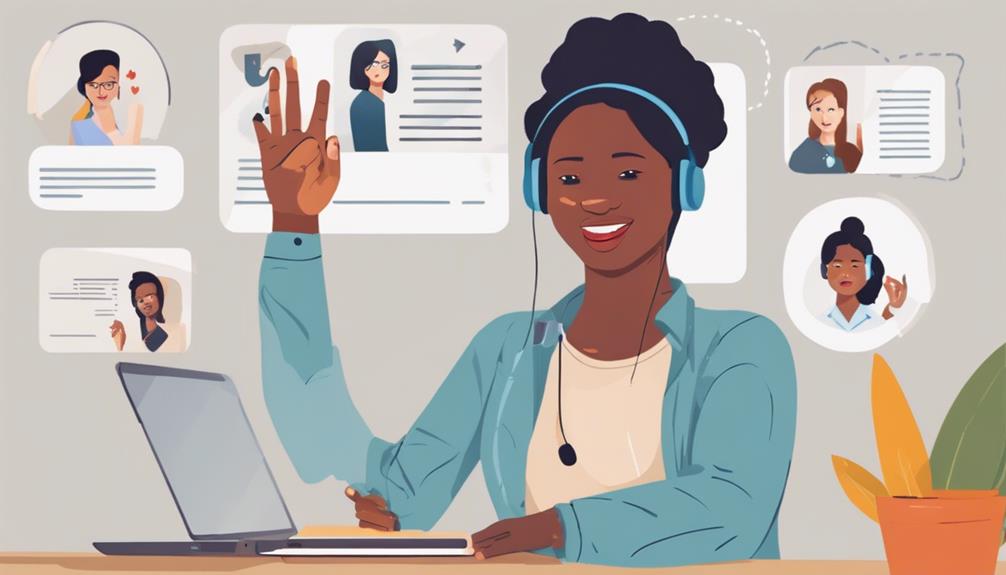
Building on the foundation of the Deaf transcription process, the suite of services offered expands to cater to a diverse range of needs within the Deaf community. These services include:
- Real-time Transcription: For live interactions, real-time transcription services provide immediate access to spoken content, ensuring deaf individuals can actively participate and engage in discussions without delays.
- Video Description Services: Enhancing accessibility for deaf individuals watching videos, this service provides detailed descriptions of visual content, enabling them to fully comprehend and enjoy multimedia presentations.
- Tailor-made Turnaround Time Packages: To meet specific needs and preferences, tailor-made turnaround time packages are available, ensuring timely delivery of accurate transcripts. Whether for educational purposes, religious events, or professional seminars, these packages guarantee that transcripts are delivered promptly and efficiently.
These additional services aim to bridge communication gaps, empower the Deaf community, and provide inclusive solutions for a variety of settings and situations.
Why Choose Flatworld Solutions

At Flatworld Solutions, we prioritize affordability and transparency in our offerings for deaf transcription services. Our commitment to providing fair cost estimates ensures that access to high-quality transcription services is attainable for all individuals in the deaf community. We understand the importance of data security when handling sensitive information, which is why we've stringent measures in place to protect files throughout the transcription process.
By leveraging the latest technology tools and software, we guarantee efficiency and accuracy in our transcription services. Our well-established infrastructure supports the delivery of reliable transcriptions that cater to the unique needs of the deaf community. Clients who choose Flatworld Solutions benefit from a streamlined experience, with a dedicated project manager serving as their single point of contact.
When you choose Flatworld Solutions, you aren't just accessing transcription services; you're gaining a partner dedicated to meeting your needs with professionalism and innovation.
Frequently Asked Questions
What Is the Transcription Service for the Deaf?
Transcription services for the deaf community are essential for accessibility. These services offer real-time text representations of spoken content, aiding in information access. Live captioning, verbatim transcription, and meaning-for-meaning translation cater to diverse needs. Providers utilize specialized tools for high-quality transcripts.
Availability of these services promotes inclusivity and equal participation. Deaf transcription services bridge communication gaps and empower individuals.
What Is the Best Transcription App for Deaf People?
Let's delve into the best transcription app for deaf individuals. It should boast high accuracy, real-time transcription, and customization options for accents and languages.
Incorporating AI-driven noise cancellation can enhance clarity. Continuous user feedback mechanisms further refine the app's effectiveness.
What Services Are Available for Deaf People?
Certainly!
Deaf individuals have various services available to enhance their communication access. These services include sign language interpreting, real-time transcription for instant communication, and specialized transcriptions for specific fields like neurology and psychiatry. Providers like TranscriptionStar ensure accurate and secure transcripts, catering to a wide range of needs within the deaf community.
These options promote inclusivity and empower deaf individuals to engage effectively in various settings.
What Transcription Services Are Available?
When exploring transcription services, we find a range of options tailored for various needs. Providers like TranscriptionStar offer specialized services for educational institutions, churches, and non-profits, ensuring accurate transcripts.
Additionally, real-time text translation services such as CART, C-Print®, and TypeWell provide crucial support for the deaf community. Video description services further enhance accessibility.
These offerings can be personalized to meet individual requirements, ensuring flawless transcripts with detailed nuances for effective communication.
Conclusion
In conclusion, when it comes to transcription services for the deaf community, options like speech-to-text services and specialized transcription providers like TranscriptionStar offer valuable support. These services not only enhance accessibility but also promote inclusivity and a sense of belonging.
Choosing the right service can make a world of difference in ensuring equal access to information and communication. So, don't hesitate to explore the options available and find the best fit for your needs.
Jamie is one of the creative forces behind the words that resonate with our audience at Deaf Vibes. With a passion for storytelling and advocacy, Jamie delves into topics that matter deeply to the deaf and hard-of-hearing community. Jamie’s articles are crafted with empathy, insight, and a commitment to positive change, from exploring the latest advancements in hearing technologies to shedding light on the everyday challenges and victories of those within the community. Jamie believes in the power of shared stories to inspire action, foster understanding, and create a more inclusive world for everyone.
Living with Hearing Loss
Top Churches With Deaf Interpreters Near Me
Mingle with the Deaf community at the top churches with interpreters nearby, where faith and inclusivity intersect in remarkable ways.

As we explore churches in our community, it's fascinating to note that over 25% of Deaf individuals in the United States identify as Christian. When searching for places of worship with Deaf interpreters nearby, it's crucial to find a welcoming and accessible environment for all.
These churches offer not just a service but a sense of community and inclusion. Let's uncover the top churches with Deaf interpreters near us and discover the unique experiences they provide for worshippers seeking a meaningful connection to their faith.
Key Takeaways
- Churches provide ASL interpreters for all services.
- Emphasis on Deaf culture and linguistic inclusivity.
- Creative worship services with ASL poetry and arts.
- Community engagement and support programs for Deaf individuals.
Houston Deaf Community Church
In Houston, Texas, the Houston Deaf Community Church warmly welcomes all deaf individuals seeking a place to worship and connect. Our church recognizes the importance of creating an inclusive environment where deaf individuals can feel a sense of belonging and community. With interpreted services tailored to meet the needs of the deaf community, we strive to ensure effective communication and participation for all members.
At Houston Deaf Community Church, we believe in the power of spreading the teachings of Jesus Christ without any language barriers. Our ASL interpreters play a crucial role in breaking down these barriers, allowing individuals to engage fully in our worship services and activities. Whether you're young or old, from any background, we encourage you to join our community for spiritual growth and fellowship.
Join us at Houston Deaf Community Church, where we embrace diversity and celebrate the unique contributions of each individual. Together, let's worship, connect, and grow in faith as one community.
Grace Deaf Fellowship

Welcoming all members of the Deaf community, Grace Deaf Fellowship in Houston, Texas, offers a vibrant church experience tailored to meet their unique needs and preferences. At Grace Deaf Fellowship, the Deaf ministry plays a central role in fostering a sense of community, faith, and support among Deaf individuals. Through interpreted services and events in American Sign Language (ASL), the church ensures that Deaf members have access to spiritual teachings and resources in a way that resonates with them.
Here is a snapshot of what Grace Deaf Fellowship offers through its Deaf ministry:
| Deaf Ministry at Grace Deaf Fellowship | Features |
|---|---|
| Interpreted Services | Tailored to Deaf community's needs |
| Inclusive Environment | Welcoming and supportive atmosphere |
| ASL Spiritual Resources | Accessible teachings and resources |
Grace Deaf Fellowship stands out for its commitment to providing a space where Deaf individuals can worship, connect, and grow spiritually within a community that understands and meets their unique requirements.
Silent Hands Ministry
Silent Hands Ministry in Houston, Texas, passionately facilitates sign language interpretation services to foster accessibility and inclusivity for the Deaf community during church events and activities.
This Baptist-affiliated organization collaborates with churches to ensure that Deaf individuals can participate fully in worship services.
The skilled interpreters at Silent Hands Ministry are proficient in American Sign Language (ASL), bridging the communication gap and creating a Deaf-friendly environment for religious gatherings.
Hands of Praise Church

At Hands of Praise Church, interpreter availability is a key focus, ensuring seamless communication accessibility for all members of the deaf community.
Their commitment to providing sign language interpreted services creates an inclusive environment where everyone can participate fully.
Hands of Praise Church stands out for their dedication to fostering spiritual growth and fellowship through tailored ASL worship experiences.
Interpreter Availability
Ensuring accessibility for the Deaf community, Hands of Praise Church provides ASL interpreters for all Sunday services and special events, offering a welcoming environment for all worshippers. Interpreted services are also available during midweek gatherings, ensuring that Deaf individuals can fully participate in the church's activities.
The ASL interpreters at Hands of Praise Church aren't only highly skilled but also trained to ensure clear communication, making the worship experience inclusive for everyone. In addition to interpreter services, Hands of Praise Church goes a step further by offering Deaf ministry resources and support, showing a commitment to meeting the spiritual needs of the Deaf community.
This dedication to accessibility and inclusion creates a warm and inviting space for all worshippers.
Communication Accessibility
With a strong commitment to accessibility and inclusivity, Hands of Praise Church in Houston ensures that all church services are equipped with sign language interpretation for the Deaf community. At Hands of Praise Church, communication accessibility is a top priority, making sure that Deaf individuals can actively engage in all spiritual activities. Deaf interpreters play a crucial role in facilitating seamless communication during worship services, enhancing the overall experience for attendees. The Baptist Church provides a welcoming environment where everyone, including the Deaf community, can feel included and valued. Below is a table highlighting the dedication of Hands of Praise Church towards communication accessibility:
| Aspect | Description |
|---|---|
| Sign Language Interpreters | Available for all church services |
| Inclusivity | Ensuring Deaf individuals can fully participate in spiritual activities |
| Worship Experience | Enhanced for all attendees through the presence of Deaf interpreters |
Sign of Hope Church

At Sign of Hope Church, Deaf individuals can find interpreter services readily available during worship services. The church's weekly service schedule ensures that the Deaf community can actively engage in spiritual practices every Sunday.
Sign of Hope Church's commitment to community engagement fosters a welcoming environment for all attendees.
Interpreter Availability
Sign of Hope Church offers interpreted services with certified and experienced ASL interpreters every Sunday at 9:00am and 11:00am, providing a personalized and inclusive worship experience for Deaf individuals.
Our interpreters are skilled in interpreting for the Deaf and are dedicated to ensuring clear communication during our services. Deaf worshippers can even request specific interpreters to further tailor their experience.
We value accessibility and strive to create a welcoming environment where everyone can fully participate in our community. At Sign of Hope Church, we're committed to making sure that all attendees, including those who are Deaf, feel included and engaged in our services through the support of our knowledgeable interpreters.
Service Schedule
We understand the importance of knowing the service schedule at Sign of Hope Church for your convenience and participation in our interpreted services for the deaf community. In Houston, Texas, you can join us for interpreted services on Sundays at 9:00am and 11:00am.
Our commitment to accessibility means that deaf attendees in the United States can engage fully in the worship experience through American Sign Language interpretation of sermons, prayers, and music. By offering these services, we aim to create an inclusive space where everyone can worship together regardless of hearing abilities.
Join us at Sign of Hope Church to be a part of a community that values diversity and embraces innovation in making religious services accessible to all.
Community Engagement
Engaging actively with the Deaf community in Houston, Texas, involves fostering a culture of inclusivity and belonging at Sign of Hope Church. We prioritize creating a Deaf-friendly environment where everyone feels welcomed and valued.
Our commitment to providing sign language interpretation during all services and events ensures that communication is accessible to all. Sign of Hope Church goes beyond just interpretation by offering Deaf-friendly programs and activities designed to actively engage the community.
Deaf Life Church
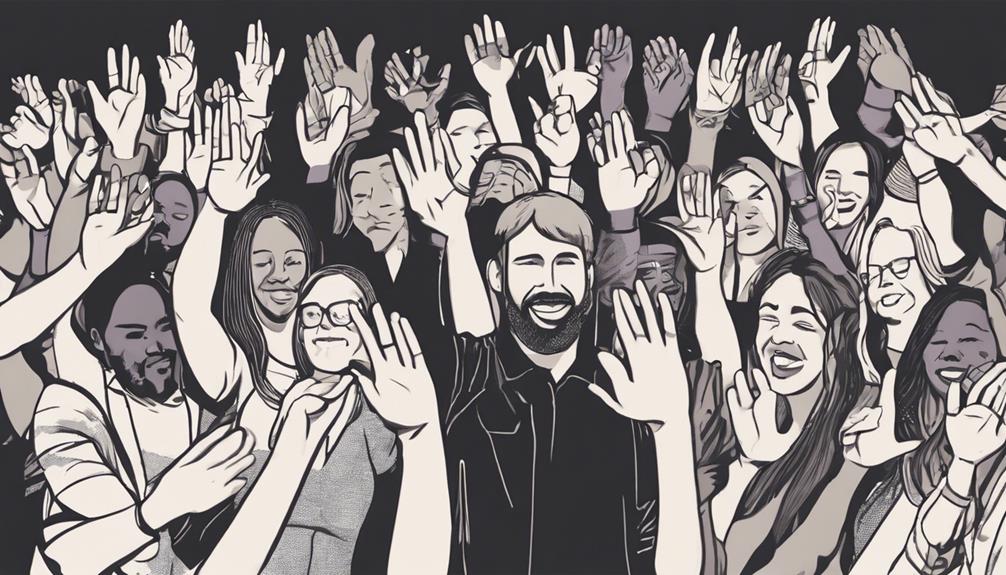
At Deaf Life Church, our Sunday services at 10:00am are ASL-interpreted to create a welcoming space for Deaf individuals and their families. We understand the importance of accessibility and inclusion, which is why we strive to provide a supportive community where everyone can feel connected and valued. Deaf Life Church not only focuses on spiritual growth but also celebrates Deaf culture and sign language.
Our interpreters are highly skilled and experienced in serving the Deaf community, ensuring that our services are easily understandable and engaging for all attendees. Beyond our weekly services, we organize social events, Bible studies, and outreach programs specifically tailored to meet the needs and interests of our Deaf members. These initiatives aim to foster a sense of belonging and strengthen the bonds within our community.
Join us at Deaf Life Church as we embrace diversity, promote inclusivity, and journey together in faith and fellowship.
Hands in Harmony Fellowship

At Hands in Harmony Fellowship, we understand the importance of access and inclusion for the Deaf community. Our Interpreter Availability Schedule ensures that all services are accessible through ASL interpretation.
Through Sign Language Sermons and active Deaf Community Involvement, we strive to create a welcoming and spiritually enriching environment for all.
Interpreter Availability Schedule
Ensuring access for the Deaf community, Hands in Harmony Fellowship provides interpreter availability during their Sunday service at 10:30am and Wednesday service at 7:00pm.
| Day | Time |
|---|---|
| Sunday | 10:30am |
| Wednesday | 7:00pm |
Having interpreters available for all worship services fosters an inclusive environment where Deaf individuals can comfortably participate. At Hands in Harmony Fellowship, the interpreter availability schedule is carefully planned to guarantee accessibility for the Deaf community. This commitment ensures that everyone can engage fully in the spiritual experience without barriers. By offering interpreted services at these specific times, we aim to create a welcoming space where all individuals, regardless of hearing abilities, can come together to worship and connect.
Sign Language Sermons
Hands in Harmony Fellowship offers sign language sermons specifically tailored for the Deaf community in Houston. Deaf interpreters at our fellowship play a crucial role in ensuring that our sermons are inclusive and accessible to all. Here's why our sign language sermons stand out:
- Conducted in American Sign Language (ASL) for maximum accessibility.
- Spiritual guidance and support provided through sign language.
- Deaf interpreters facilitating a meaningful worship experience.
- Incorporation of Deaf culture and values for resonance within the community.
At Hands in Harmony Fellowship, we're dedicated to creating a welcoming environment where Deaf individuals can fully engage in their faith journey through sign language sermons.
Deaf Community Involvement
Involving the Deaf community in various church activities and leadership roles is a central aspect of our ministry at Hands in Harmony Fellowship in Houston. We believe in empowering Deaf individuals to take on pivotal roles within our community, fostering a sense of belonging and ownership. By providing opportunities for Deaf members to share their faith through sign language, ASL poetry, and visual arts during worship services, we create a vibrant and inclusive environment where everyone can thrive spiritually and socially. This commitment to Deaf community involvement not only enriches our worship experience but also strengthens the bond among all members. Below is a snapshot of how Deaf individuals contribute to our fellowship:
| Involvement | Description |
|---|---|
| Planning and Organizing | Deaf individuals actively participate in event planning and organization. |
| Worship Expression | Opportunities for Deaf members to express their faith through various mediums. |
| Leadership Roles | Deaf leaders take on key positions within the fellowship, shaping its direction. |
Echoes of Faith Church

At Echoes of Faith Church in Houston, Texas, deaf individuals can fully engage in worship and activities through interpreted services. The church goes above and beyond to ensure that everyone can participate in spiritual practices regardless of hearing ability. Here's why Echoes of Faith Church stands out for the deaf community:
- Interpreted Services: Deaf interpreters are present during all services, enabling seamless communication for deaf worshipers.
- Inclusive Environment: Echoes of Faith Church fosters a welcoming atmosphere where deaf individuals feel valued and embraced.
- Effective Communication: Deaf interpreters at the church facilitate clear understanding and engagement during various events and gatherings.
- Accessibility Focus: The church's commitment to accessibility demonstrates a dedication to providing spiritual fulfillment for all, regardless of hearing capabilities.
Echoes of Faith Church stands as a beacon of inclusivity and understanding, ensuring that deaf individuals can connect deeply with their faith in a supportive community.
Hands of Grace Community
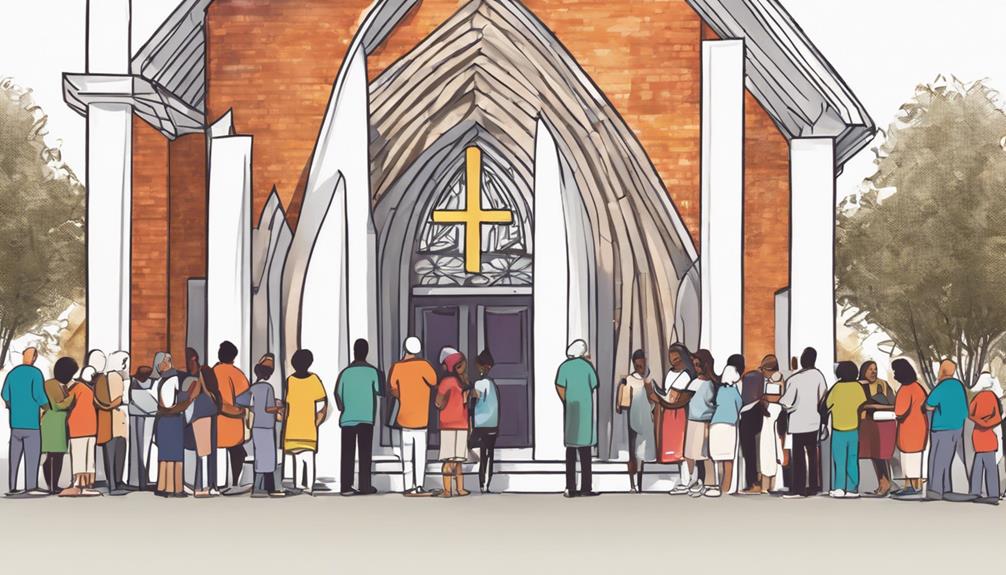
Echoes of Faith Church in Houston, Texas, highlights the importance of deaf accessibility in religious settings, and this commitment transitions seamlessly to the discussion of Hands of Grace Community. Hands of Grace Community is a Deaf church located in Houston, Texas, dedicated to providing a welcoming and inclusive space for the Deaf community. The church offers interpreted services and events tailored to meet the spiritual needs of Deaf worshipers. At Hands of Grace Community, Deaf culture and identity are actively promoted, fostering a sense of belonging and connection among attendees. The church's focus on creating a supportive environment for Deaf individuals sets it apart as a beacon of inclusivity and understanding.
| Aspect | Details |
|---|---|
| Location | Houston, Texas |
| Services Provided | Interpreted services and events for the Deaf community |
| Focus | Welcoming and inclusive environment for Deaf individuals |
| Special Emphasis | Promotion of Deaf culture and identity within services |
Unity in Signing Church

Unity in Signing Church, located in Houston, Texas, is renowned for its commitment to providing inclusive and accessible worship services for the Deaf community. Our church embraces Deaf culture and language, fostering a sense of belonging and understanding among worshipers.
Here are key highlights of what makes Unity in Signing Church a unique Deaf Church experience:
- Sign Language Interpretation: All services at Unity in Signing Church offer sign language interpretation, ensuring that Deaf individuals can fully participate and engage in worship.
- Supportive Environment: The church focuses on creating a supportive environment where Deaf individuals can connect, worship, and spiritually grow in a community that values their unique identity.
- Cultural and Linguistic Inclusivity: Deaf individuals express their faith through sign language, emphasizing the importance of cultural and linguistic inclusivity within the church.
- Creative Worship Services: Unity in Signing Church offers diverse and creative worship services that incorporate ASL poetry, dancing, and even Deaf rap, enhancing the spiritual experience for all attendees.
Frequently Asked Questions
Where Do Deaf People Go to Church?
We go to churches where we feel welcomed and included. Accessible services with interpreters help us fully engage in worship and connect with our community. Attending these churches enhances our spiritual experience and sense of belonging. It's vital to prioritize communication accessibility for all members.
Deaf-friendly churches provide us with the support we need to participate in religious teachings and fellowship. Our spiritual journey is enriched by these inclusive spaces.
What Percentage of Deaf People Attend Church?
We understand the importance of knowing the percentage of deaf people attending church. While specific data may vary, studies suggest around 2% of deaf individuals in America worship regularly.
In Texas, where severe hearing loss affects 3.5% of the population, efforts by groups like the Texas Baptist Conference of the Deaf serve about 5,000 worshipers.
Challenges like communication barriers persist, but dedicated individuals and ministries strive to make church accessible to all.
What Is a Deaf Ministry?
Deaf ministries are specialized religious services meeting the spiritual and community needs of Deaf individuals. These ministries offer sign language interpretation, visual aids, and tailored activities for Deaf attendees. They play a vital role in fostering belonging, spiritual growth, and fellowship within the church community.
Conclusion
As we journey through life, may we find solace in the hands that guide us towards unity and understanding.
Just as interpreters bridge the gap between languages, let's be bridges of compassion and connection in our communities.
Together, we can create a harmonious symphony of diversity, where every voice is heard and every soul is valued.
Let's continue to strive for inclusivity and acceptance, embracing the beauty of our differences as we walk hand in hand towards a brighter future.
Jamie is one of the creative forces behind the words that resonate with our audience at Deaf Vibes. With a passion for storytelling and advocacy, Jamie delves into topics that matter deeply to the deaf and hard-of-hearing community. Jamie’s articles are crafted with empathy, insight, and a commitment to positive change, from exploring the latest advancements in hearing technologies to shedding light on the everyday challenges and victories of those within the community. Jamie believes in the power of shared stories to inspire action, foster understanding, and create a more inclusive world for everyone.
Living with Hearing Loss
Batteries That Cannot Be Recycled: A How-To Guide
Uncover the secrets of handling unrecyclable batteries – discover innovative solutions for a more sustainable future.

As we navigate the landscape of battery disposal, we often encounter roadblocks in the form of batteries that seem to be the dead ends of recycling. How can we responsibly handle these unrecyclable powerhouses of our devices?
Let's shed light on strategies and insights that could offer a pathway towards a more sustainable approach to dealing with batteries that pose challenges in the recycling realm.
Key Takeaways
- Proper handling and disposal prevent environmental harm.
- Store and transport unrecyclable batteries safely.
- Adhere to local regulations for proper disposal.
- Repurpose non-recyclable batteries for low-drain devices.
Common Non-Recyclable Battery Types
When it comes to common non-recyclable battery types, identifying damaged or leaking batteries is crucial due to the safety risks they pose. Non-recyclable batteries can include those with mixed chemistries, like combining lithium and alkaline batteries, which can't be recycled together. These mixed chemistry batteries not only complicate the recycling process but can also lead to safety hazards if they leak or malfunction.
Moreover, it's essential to be cautious with non-standard batteries, such as homemade or modified batteries, as these aren't accepted for recycling due to safety concerns and the unknown chemistry involved. When handling electronic devices that contain batteries, it's important to recycle them separately from the batteries to prevent any potential risks.
Environmental Impact of Unrecycled Batteries

Unrecycled batteries pose a significant threat to the environment by contaminating groundwater and ecosystems with toxic chemicals such as mercury, lead, cadmium, and nickel. Improper disposal of batteries can lead to hazardous waste seeping into the ground and water sources, causing long-lasting damage to the ecosystem. The environmental impact of unrecycled batteries goes beyond contamination and extends to the risk of fires and explosions due to the reactive materials present in these batteries.
3 Key Points:
- Proper Disposal Methods: Ensuring batteries are disposed of correctly is crucial to prevent the release of toxic substances that can harm the environment.
- Recycling Initiatives: Recycling batteries reduces the amount of hazardous waste that ends up in landfills, contributing to a cleaner environment.
- Preventing Groundwater Contamination: By recycling batteries, we can significantly reduce the risk of groundwater contamination, protecting both human health and ecosystems.
Proper Storage of Unrecyclable Batteries
To ensure the safe storage of unrecyclable batteries, it is essential to follow proper guidelines such as storing them in a cool, dry place away from direct sunlight. Keeping unrecyclable batteries in their original packaging or separate compartments can prevent short-circuiting. Placing these batteries in a plastic container will help contain any leaks or spills. It's crucial to avoid mixing different types of unrecyclable batteries to prevent potential chemical reactions. Lastly, labeling the storage container clearly as 'Used Batteries – Do Not Recycle' is important for safety and proper disposal.
| Storage Guidelines for Unrecyclable Batteries |
|---|
| Store in a cool, dry place away from sunlight |
| Keep in original packaging or separate compartments to prevent short-circuiting |
| Place in a plastic container to contain leaks |
| Avoid mixing different types to prevent chemical reactions |
| Label container as 'Used Batteries – Do Not Recycle' |
Local Regulations on Battery Disposal
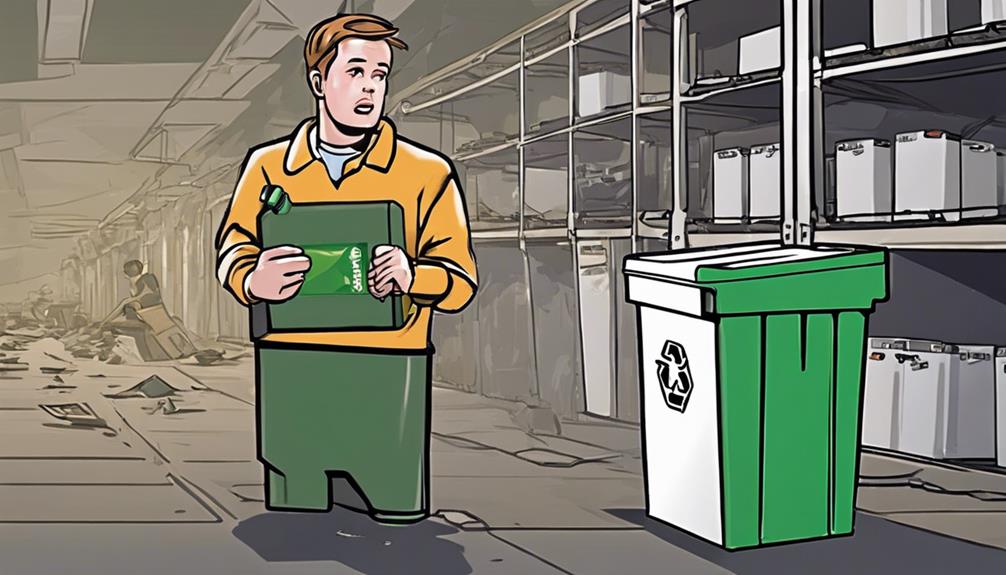
Local regulations on battery disposal can significantly impact how individuals must handle and discard their used batteries. It's crucial to understand the battery disposal regulations in your locality to avoid improper battery disposal and prevent environmental harm. Here are some key points to consider:
- Variation in Regulations: Local guidelines on battery disposal vary by state and city. Some areas may have specific rules for disposing of different types of batteries, such as alkaline, lithium-ion, or lead-acid batteries.
- Restrictions on Disposal Methods: Certain locations may prohibit throwing batteries in the trash due to environmental concerns. To comply with these regulations, individuals may need to use designated drop-off locations or recycling centers for their used batteries.
- Consult Local Authorities: It's essential to check with local waste management authorities to understand the specific guidelines on battery disposal in your area. By following these regulations, you can contribute to the proper management of battery waste and protect the environment.
Safe Handling and Transport Guidelines
When dealing with batteries that can't be recycled, it's crucial to prioritize safety measures such as wearing gloves to shield against corrosive materials.
Securely transporting these batteries in a non-conductive container is essential to prevent leaks or short-circuiting.
Additionally, storing non-recyclable batteries away from heat sources and flammable items is vital to minimize fire risks.
Handling Safety Measures
Regularly wearing gloves when handling non-recyclable batteries is crucial to prevent direct exposure to toxic chemicals. To ensure safe handling of these batteries, follow these safety measures:
- Use a Non-Conductive Container: Place non-recyclable batteries in a non-conductive, secure container to prevent any accidental discharge or short-circuiting during transport.
- Avoid Mixing: It's important not to mix non-recyclable batteries with recyclable ones to avoid contamination and potential hazards.
- Proper Storage: Store non-recyclable batteries in a cool, dry place away from flammable materials to reduce the risk of fire or other safety incidents.
Proper Transportation Methods
To ensure the safe handling and transport of non-recyclable batteries, it's essential to follow proper guidelines and precautions to minimize potential risks and hazards.
Always transport batteries in secure containers or their original packaging to prevent short-circuiting or leaks. When dealing with damaged batteries, use caution to avoid skin contact or inhaling harmful chemicals.
Secure batteries during transport to prevent movement or damage that could lead to safety hazards. It's crucial to keep batteries away from heat sources and flammable materials to reduce the risk of fire or explosion while in transit.
Different types of batteries, like lithium-ion or lead-acid, may have specific transportation guidelines that need to be followed for safe handling and compliance with regulations.
Storage Precautions to Take
For the safe storage and transport of non-recyclable batteries, it's crucial to segregate them from recyclable batteries to prevent potential contamination risks.
Here are three essential precautions to take when handling non-recyclable batteries:
- Store Separately: Keep non-recyclable batteries in a designated area away from recyclable ones to avoid any cross-contamination.
- Cool and Dry Storage: Store non-recyclable batteries in a cool, dry place, shielded from direct sunlight to maintain their integrity.
- Secure Transport: When moving non-recyclable batteries, use their original packaging or a secure container to prevent damage and potential leakage during transportation.
Following these storage precautions won't only ensure the safety of handling non-recyclable batteries but also help in minimizing environmental risks associated with their disposal.
Alternative Uses for Non-Recyclable Batteries

Consider repurposing non-recyclable batteries for low-drain devices to prolong their functionality and minimize waste. Instead of tossing them out immediately, give these batteries a second life by using them in gadgets that do not require high power output. Here are some practical ways to upcycle non-recyclable batteries:
| Device | Examples |
|---|---|
| Remote Controls | TV remotes, air conditioner remotes |
| Wall Clocks | Analog or digital clocks |
| LED Candles & Decorative Lights | Mood lighting, holiday decorations |
| Children's Toys | Small toys, toy cars, dolls |
| Emergency Flashlights | Power outage lights, camping lanterns |
| DIY Projects | Small robotics, crafts, educational kits |
Disposal Options for Non-Recyclable Batteries

Repurposing non-recyclable batteries for low-drain devices can extend their functionality and reduce waste, but when these batteries reach the end of their usable life, it's crucial to consider proper disposal options to prevent environmental harm.
Here are some disposal options for non-recyclable batteries based on local regulations:
- Trash Disposal: In many areas, non-recyclable batteries such as non-rechargeable alkaline batteries can be safely disposed of in the regular trash. Following local guidelines for trash disposal ensures that these batteries are handled properly.
- Special Collection Programs: Some localities offer special collection programs for non-recyclable batteries. These programs may provide designated drop-off locations or collection events where you can safely dispose of these batteries.
- Hazardous Waste Facilities: Non-recyclable batteries can sometimes be disposed of at hazardous waste facilities. These facilities are equipped to handle various types of hazardous materials, ensuring proper disposal according to regulations.
It's crucial not to mix non-recyclable batteries with recyclable ones during disposal to prevent contamination and environmental harm. Remember to seal the batteries properly before disposal to avoid leaks or damage.
Future Innovations in Battery Recycling
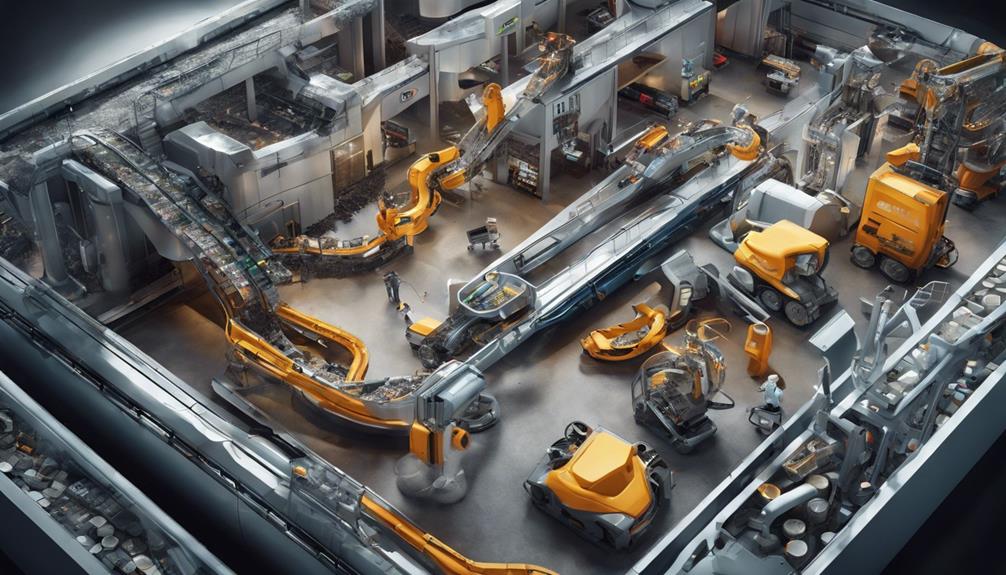
Innovative advancements in battery recycling are revolutionizing the way we handle and recover valuable materials from used batteries. Advanced sorting technologies are being developed to efficiently separate different battery types, leading to increased recycling rates. These advancements aim to recover essential materials such as cobalt and lithium, reducing the reliance on mining for these resources. Research in battery recycling is also focused on creating more sustainable processes to manage the growing volume of used batteries effectively. By exploring improved methods for dismantling and processing batteries, we can minimize the environmental impact of their disposal. Collaboration between industry, government, and research institutions plays a crucial role in driving these advancements in battery recycling technology.
| Benefits of Future Battery Recycling Innovations |
|---|
| Efficient sorting of battery types |
| Increased recycling rates |
| Recovery of valuable materials like cobalt and lithium |
| Sustainable processes for handling used batteries |
| Reduced environmental impact of battery disposal |
Frequently Asked Questions
What Batteries Cannot Be Recycled?
Sure thing!
Some batteries that can't be recycled include lithium-ion batteries, lead-acid batteries, and non-rechargeable alkaline batteries like AA, AAA, and 9-volt batteries. It's crucial to dispose of these batteries properly to avoid environmental harm.
When dealing with mixed or damaged batteries, caution is advised. Check with local recycling facilities or hazardous waste disposal sites for guidance on how to handle batteries that can't be recycled.
Can All Types of Batteries Be Recycled and How?
Yes, not all types of batteries can be recycled. Understanding which ones can't be recycled is crucial for proper disposal.
Lithium-ion batteries, for instance, pose challenges due to safety concerns and the need for specialized facilities.
Button-cell batteries contain toxic materials like mercury and must be recycled correctly.
Lead-acid batteries used in vehicles require specific processes for recovering valuable materials.
Knowing these distinctions helps in making informed decisions to protect the environment.
What Can You Do With a Broken Lithium-Ion Battery?
When facing a broken lithium-ion battery, it's imperative to act cautiously. Never attempt DIY repairs due to the risks of fire or explosion. Instead, contact professionals at a recycling center or hazardous waste disposal facility for safe handling.
Avoid exposing the damaged battery to extreme conditions like heat. Proper disposal is crucial to prevent environmental harm and ensure safety. Let's prioritize responsible actions to mitigate potential hazards effectively.
How Do You Dispose of Bulging Lithium Batteries?
When disposing of bulging lithium batteries, it's crucial to handle them with care due to potential safety risks. Avoid puncturing or tampering with them to prevent fires or explosions.
Store these batteries in a cool, dry place away from flammable materials.
Always seek professional help for safe disposal, reaching out to local waste management or specialized recycling facilities for guidance. Bulging lithium batteries may indicate internal damage, necessitating expert handling to ensure safety.
Conclusion
In conclusion, it's crucial for us to properly dispose of batteries that can't be recycled to protect our environment.
Did you know that approximately 3 billion batteries are thrown away each year in the United States alone?
By following the guidelines in this guide, we can all play a part in reducing the environmental impact of unrecycled batteries and work towards a more sustainable future.
Let's do our part and make a difference!
Jamie is one of the creative forces behind the words that resonate with our audience at Deaf Vibes. With a passion for storytelling and advocacy, Jamie delves into topics that matter deeply to the deaf and hard-of-hearing community. Jamie’s articles are crafted with empathy, insight, and a commitment to positive change, from exploring the latest advancements in hearing technologies to shedding light on the everyday challenges and victories of those within the community. Jamie believes in the power of shared stories to inspire action, foster understanding, and create a more inclusive world for everyone.
-

 Navigating the VA System2 months ago
Navigating the VA System2 months agoVA Hearing Loss Rating Chart: Understanding Disability Compensation
-

 Therapies and Interventions3 weeks ago
Therapies and Interventions3 weeks ago10 Auditory Processing Goals for Effective Speech Therapy
-

 Vetted2 months ago
Vetted2 months ago15 Best Oticon Hearing Aids to Improve Your Hearing in 2024
-

 Navigating the VA System2 months ago
Navigating the VA System2 months agoUnderstanding Bilateral Hearing Loss VA Rating Criteria
-

 Tinnitus2 months ago
Tinnitus2 months agoVA's Rating System for Tinnitus and Hearing Loss Explained
-

 Sign Language3 weeks ago
Sign Language3 weeks agoMastering the Art of Signing Letters in Sign Language
-

 Sign Language4 weeks ago
Sign Language4 weeks agoSign Language Emoji Translator: How to Communicate With Gestures
-

 Living with Hearing Loss3 months ago
Living with Hearing Loss3 months ago10 Deaf-Friendly Dating Sites to Find Your Perfect Match


















